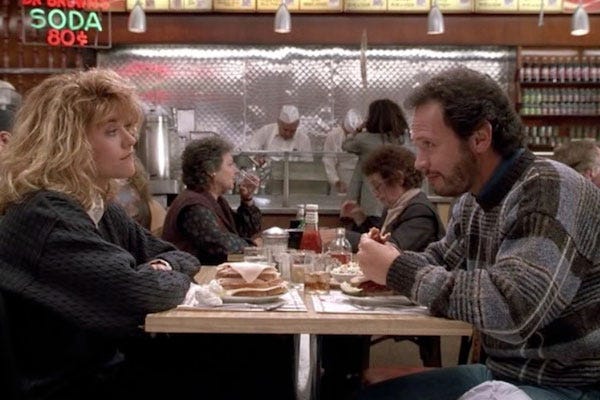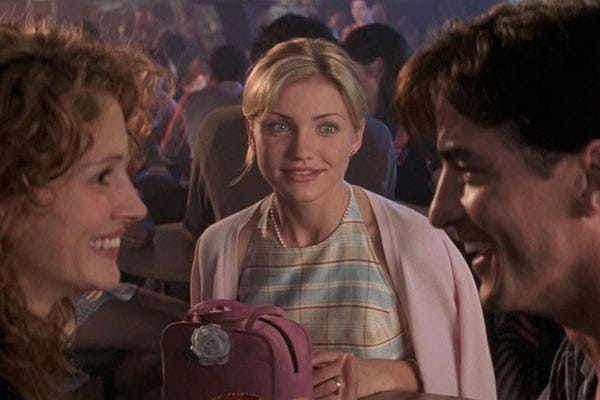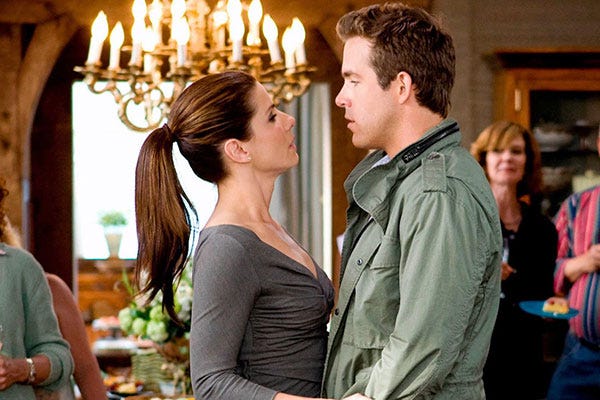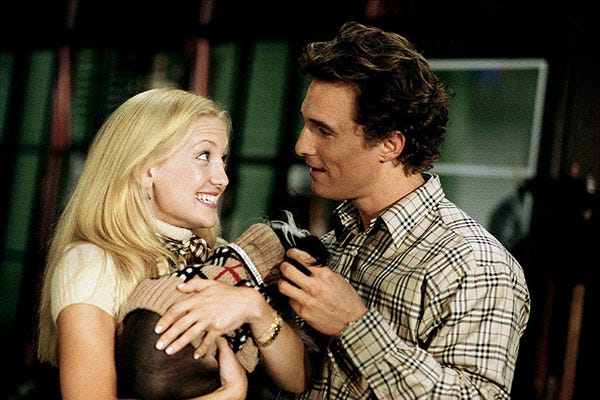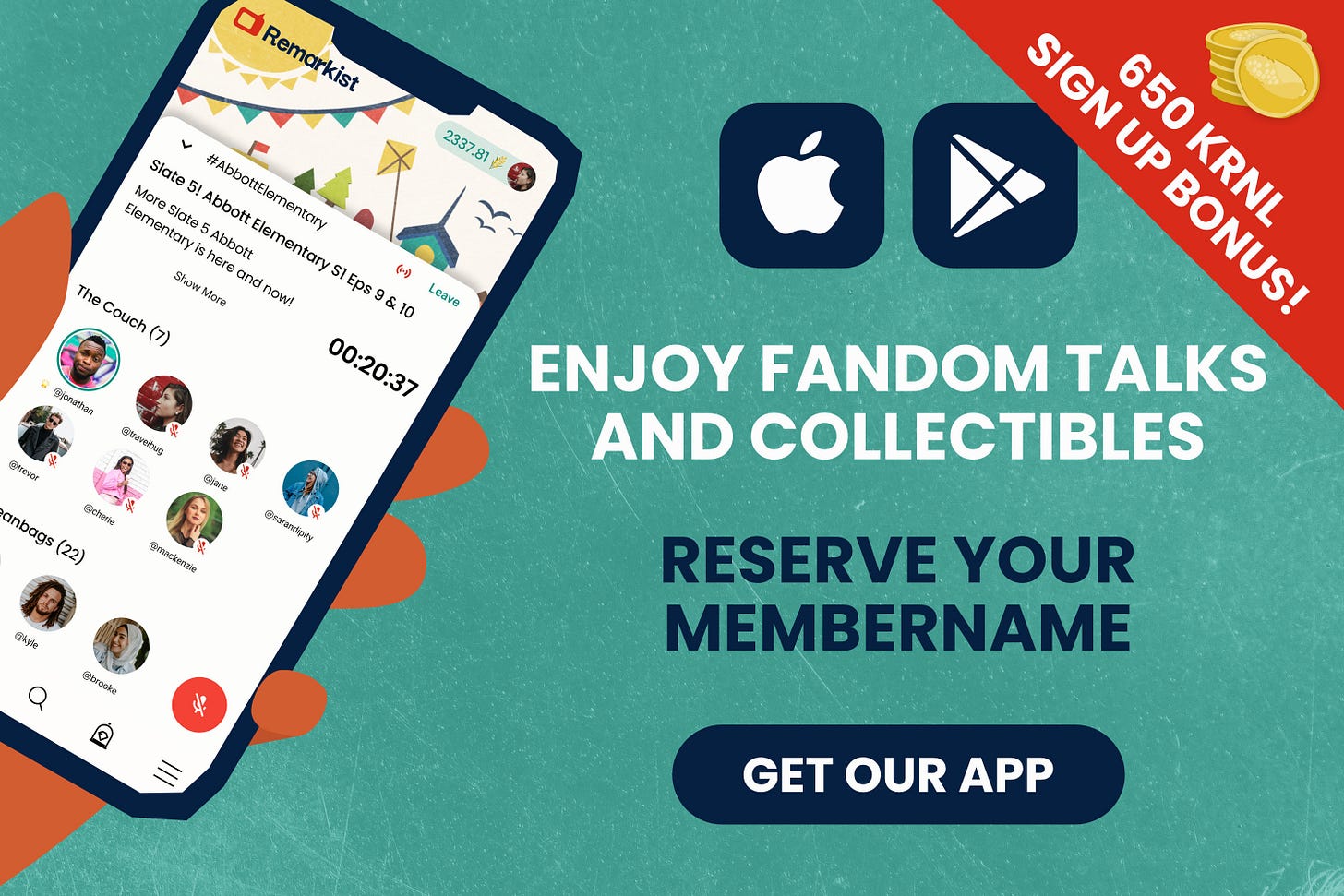What is Your Favorite Romance Trope? Uncover the Magic Behind Impactful Love Stories
Friends to lovers, love triangles, fake dating and more tropes that make romantic stories intoxicating!
When I first watched When Harry Met Sally (the greatest romcom of all time, in my opinion), I was so charmed. I felt so good about two characters who started as friends and throughout the course of the whole movie slowly but surely (spoiler alert!) fall in love. Similarly, I was a big fan of Dawson’s Creek at the time, and the “will they/won’t they” nature of Dawson and Joey’s friendship/love story was absolutely intoxicating to me. It wasn’t until I stopped to think about these stories and what they had in common that I realized why I liked them so much. I was a fan of a particular type of romance trope: the friends to lovers trope.
Tropes dominate storytelling in all genres: creators rely on tried-and-true storytelling devices that help them build out plots and character development. The romance genre in books, movies, and TV shows is formulaic in the best possible way. Fans of the genre expect a HEA (or, Happily Ever After), meaning that a couple ends up together when the story is over. But the way they get there can take a variety of forms. And romance fans typically have their favorite tropes that help them choose the stories they engage with—and many stories use more than one trope throughout the narrative. Let’s take a look at some of those tropes and some of the most popular romance stories that use them!
Friends to Lovers
Of course, When Harry Met Sally qualifies for this trope. Typically, a friends to lovers story centers on two protagonists that we meet in a platonic, friendship-only relationship. Maybe one of those characters is harboring a crush, maybe they both are, or maybe they discover their feelings throughout the story. A classic friends to lovers movie is 13 Going On 30, where Jennifer Garner’s Jenna falls in love with Mark Ruffalo’s Matty–even if it takes them a bit of time travel to realize they are meant for each other. Great friends to lovers plots play out in favorites like The Duff, Always Be My Maybe, and The Switch. Popular books include Emily Henry’s People We Meet On Vacation and Plot Twist by Erin LaRosa. My personal favorite of recent years is Carley Fortune’s bestselling novel Every Summer After about two friends who fell in love on six subsequent summer vacations during their young adult years until one day it all fell apart. On television, New Girl gave us Jess and Nick, Friends gave us both Ross and Rachel and Monica and Chandler, and How I Met Your Mother gave us Ted and Robin.
Enemies to Lovers
Of course, the flip side of friends to lovers is the equally exciting enemies to lovers trope. There’s something so exciting about watching two characters hate each other so much that you just know they’re destined to make out. I don’t know another woman my age who wasn’t right there with Julia Stiles as her character Kat read off all the reasons she “hated” Heath Ledger’s Patrick through tears in 10 Things I Hate About You. I remember watching the first season of Dawson’s Creek as it aired fully side-eyeing how much Joey and Pacey seemed to dislike each other. In one of the most enjoyable bestselling books of modern times, Beach Read by Emily Henry took banter between two characters who hate each other a little too much to the next level. The Hating Game by Sally Thorne, turned into a movie of the same name, combined another trope we all love: the office romance. Dirty Dancing, an instant classic, showcased the power of dance to bring two people who are truly annoyed at one another together. And my preteen self will never forget watching Clueless for the first time in the theater as Alicia Silverstone’s Cher realized she was completely in love with the ex-step brother she thought she hated, Paul Rudd’s Josh. (And an entire generation would never be the same…)
Love Triangle
The love triangle trope adds complication that is great for fandoms, because factions will root for one match over the other. I’m never not going to mention Dawson’s Creek when it comes to love triangles, so I can tell you that the Dawson/Pacey debates of my late teenage years were pretty intense amongst me and my friends. If you’re like me, you’ll vacillate back and forth on which partnership should be the end game as the story progresses. The YA book series and Amazon Prime TV adaptation of The Summer I Turned Pretty by Jenny Han is a swoon-worthy romance about two brothers in love with the same girl, their childhood friend Belly. It starts out as a friends to lovers trope, Belly being younger brother Jeremiah’s best friend while only having eyes for his older brother Conrad, but we watch Jeremiah fall in love with Belly too. Who is the best boy for her? The internet will argue this one until the end of time, I think. A truly fascinating love triangle story features two matches that could be equally exciting options for the protagonist, in different ways. I think it’s a fun trope because it allows the consumer of the story to consider alternate endings for a character. One of the most classic movies that feature it? My Best Friend’s Wedding. You can’t help but root for both women in love with the same man. Bridget Jones’ Diary, both the movie and book by Helen Fielding, combines the love triangle trope with enemies to lovers–and it’s based on Pride & Prejudice by Jane Austen proving that these tropes have stood the test of time.
Forced Proximity
Forced proximity (think: two people are thrown together and can’t escape, like in an elevator, on a car ride, that sort of thing) is a fantastic trope because it also serves as a plot device and setup. Every holiday season when I turn on the Hallmark Channel to settle in for some Christmassy romcoms, so often the movie starts, or comes to a dramatic turning point, with a forced proximity plot twist. My absolute favorite book with a forced proximity start is The Wedding Date by Jasmine Guillory. Two singles are stuck on an elevator, and before they get out agree to be each other’s dates to a wedding they’re both attending for different reasons. This novel also combines one of my other favorite tropes: fake dating (more on that below). Another use of this trope is in Jennifer E. Smith’s The Statistical Probability of Love At First Sight (made into a Netflix movie called simply, Love At First Sight) where one chance seat assignment on a transcontinental flight changes the lives of two people forever (and has me keeping an eye out for my Mr. Right on every plane trip I take). Many authors use forced proximity within their stories to create a dramatic climax for their characters and get them together. For example, when their characters have to share the one hotel room left, and lo and behold! There’s only one bed. Of course! This trope also plays out in the movie The Proposal, which reminds me to get back to that other trope I mentioned above: fake dating.
Fake Dating
One of my low key favorite movies is a made-for-TV flick starring Melissa Joan Hart and Joey Lawrence (my mid-90s TV heroes) called My Fake Fiancé. The two characters meet by chance while in desperate need of money, and decide to become engaged to cash in on wedding gifts. Of course a fake relationship is hard to keep up if you start to really get to know the person, and start to like them for real. Some of the most beloved bestselling modern fake dating trope books are The Love Hypothesis by Ali Hazelwood and The Kiss Quotient by Helen Hoang (an inclusive novel featuring a heroine with Asperger's). The recent holiday film Love Hard cleverly navigated what’s fair in love and dating when we live so much of our lives online, constructing personas that we hope will attract the perfect person for us. And I would be absolutely remiss not to mention How to Lose a Guy in 10 Days, a classic film about two competitive career-driven singles who each have an ulterior agenda as they embark on a less than honest relationship (but fall in love anyway). The motorcycle scene on the beach on Staten Island? Gets me every time.
There are so many other tropes: office romance (Set It Up), hidden identity (You’ve Got Mail anyone?), opposites attract (Pretty Woman), second chance (The Notebook!!!), etc. There might be as many as 150 different romance tropes used in fiction, which means that no matter what, there’s something for everyone! What’s your favorite romance trope and what stories use them in the best ways? Tell us in the comments!
Want more? Head over to our Discord where you’ll find tons of other fans there chatting in our forums about the TV shows, movies, music, games and books we all love! Don’t forget to follow us on Instagram, tumblr, and Spotify for more fandom content—and hit that subscribe button so you never miss a thing at rmrk*st!




